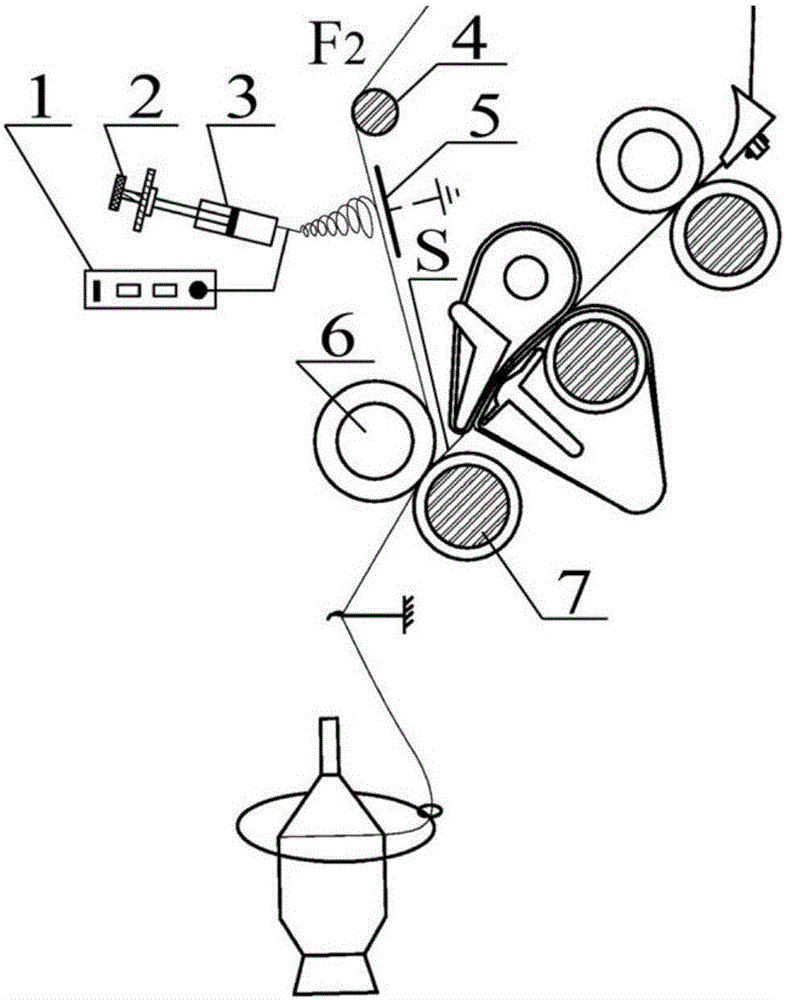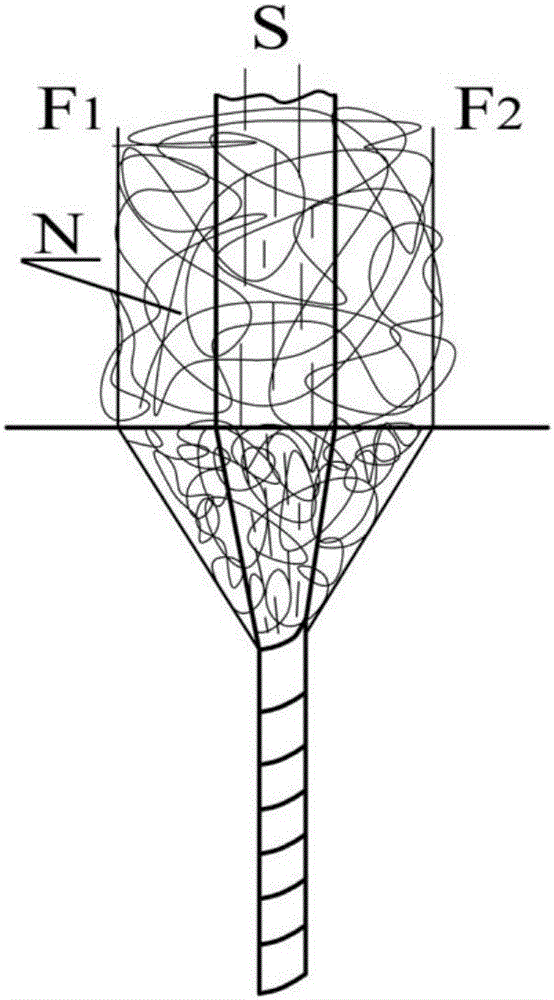Filament ring spinning composite spinning method of nano-microscale reinforced fiber
A fiber-reinforced and composite spinning technology, applied in the field of textile processing, can solve the problems of poor yarn quality, low strength of nanofibers, easy wear and tear, etc., and achieve the effect of solving easy slippage, improving strength and structural stability
- Summary
- Abstract
- Description
- Claims
- Application Information
AI Technical Summary
Problems solved by technology
Method used
Image
Examples
Embodiment Construction
[0012] A filament ring-spinning composite spinning method for forming nano-micro-scale reinforcing fibers according to the present invention will be further described in detail below in conjunction with the accompanying drawings.
[0013] see Attachment.
[0014] Aiming at the technical problems of insufficient cohesion between conventional short fibers and filaments and the production of nanofibers with high-performance and high-quality nano-yarns in the composite spinning of filament ring spinning, the present invention adopts each draft of the ring spinning frame In terms of mechanism, the short-fiber roving unwound from the roving bobbin can be cotton roving, or hemp roving, or wool roving, or polyester / cotton roving, etc., and is fed through the bell mouth by the rear roller and the rear top roller. , Middle Roller, Middle Lower Apron, Middle Upper Apron, Front Roller 7, and Front Top Roller 6. The drafting area is drafted into short fiber strands S, and the short fiber s...
PUM
 Login to View More
Login to View More Abstract
Description
Claims
Application Information
 Login to View More
Login to View More - R&D
- Intellectual Property
- Life Sciences
- Materials
- Tech Scout
- Unparalleled Data Quality
- Higher Quality Content
- 60% Fewer Hallucinations
Browse by: Latest US Patents, China's latest patents, Technical Efficacy Thesaurus, Application Domain, Technology Topic, Popular Technical Reports.
© 2025 PatSnap. All rights reserved.Legal|Privacy policy|Modern Slavery Act Transparency Statement|Sitemap|About US| Contact US: help@patsnap.com


